A Quick Course in Wine Tasting
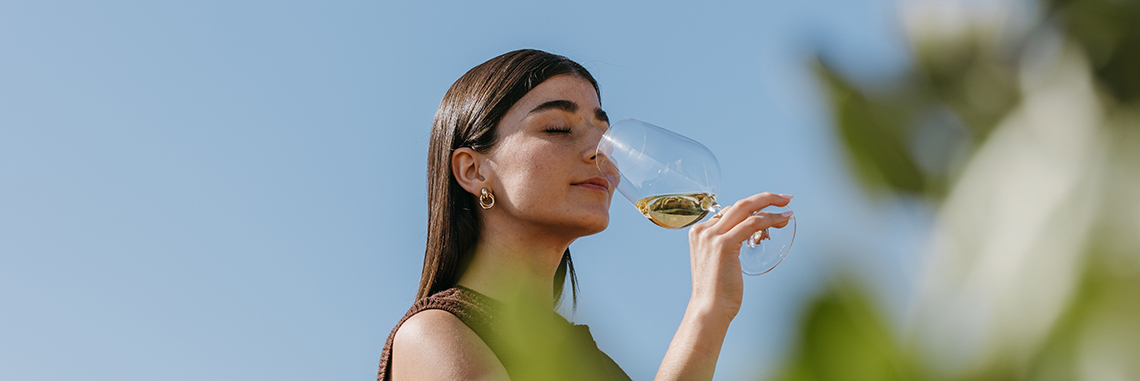
By Laura Conde, wine writer
Talking about wine tasting might seem complicated, but it doesn’t have to be. It doesn’t matter if we don’t recognize specific aromas right away or if we don’t identify wine regions, varieties or wineries with the same precision as some experts. When it comes to wine tasting, the only truly important question can be answered by anyone: do you like the wine or not? Beyond that, it's a matter of learning, curiosity, and practice, along with a dash of intuition and subjectivity.
Every person has a different olfactory memory. Some may easily recognize certain notes simply because a previous experience allows them to draw a connection between the aroma and a memory. This does not necessarily make them better tasters or mean that someone who fails to detect a specific aroma should give up on wine tasting. What it does mean is that every wine is a living entity with its own personality and unique expressivity – and as is the case with people too, we don’t all read them the same way.
That said, we can improve our tasting technique by learning to carefully evaluate wines in terms of their appearance, smell, and taste. The good news is that we can train ourselves to do this. And more good news: practicing is a lot of fun, especially when done with other people. Here are ten simple steps to hone our skills:
1. Serve the wine at the right temperature
First, we must make sure to serve the wine at the correct temperature. Whites are best tasted at 7-10ºC, young reds at 12-14ºC, and oak-aged reds at 16-18ºC. Serving a wine too cold or too warm can conceal or distort the aromas and flavours. We might think our nose isn’t picking up on certain notes, but really, they are masked by the temperature. In setting up our tasting environment, we should look for a well-ventilated room, free from strong odours, with good lighting.
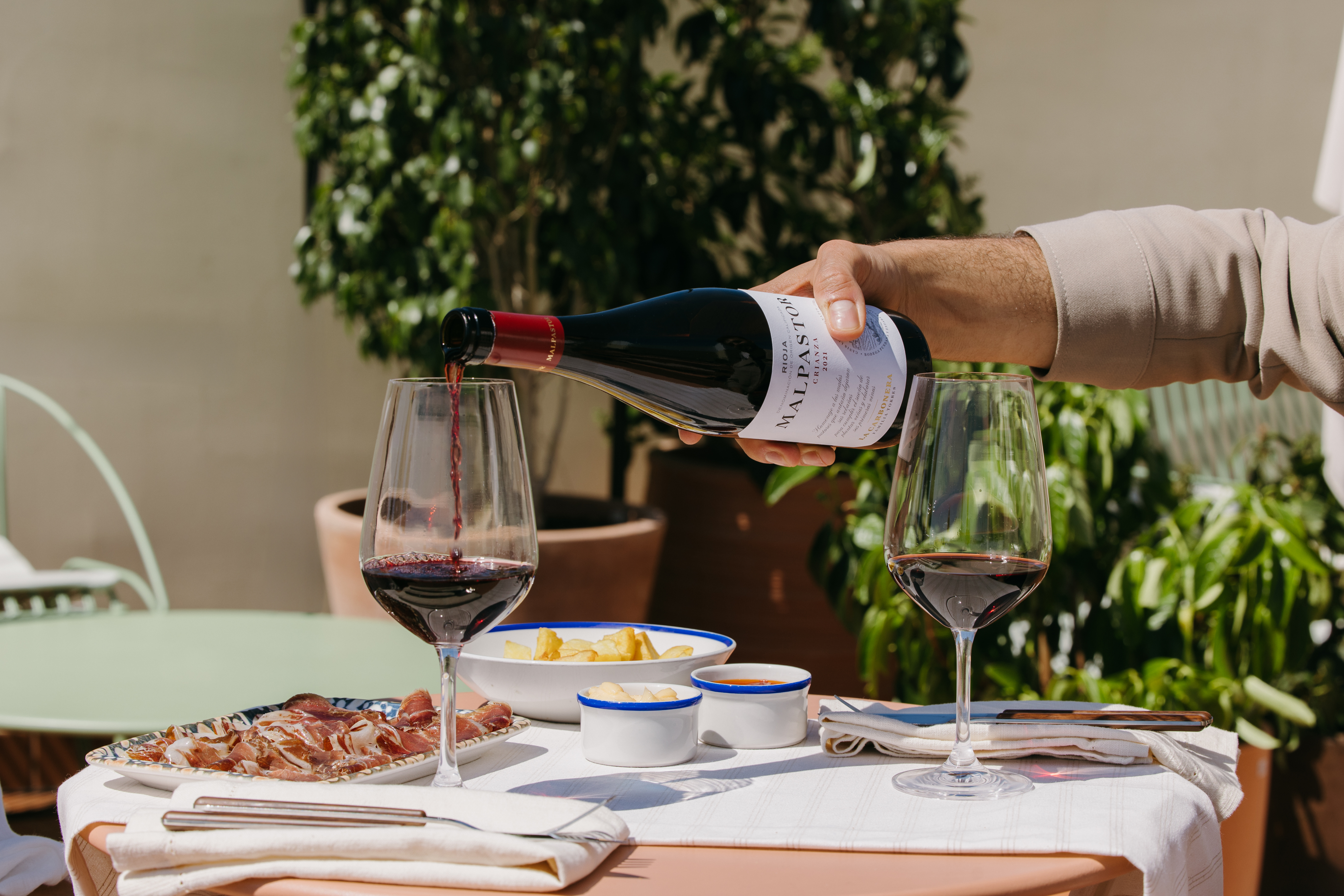
Serving Malpastor, a Familia Torres property, on a terrace
2. Appreciating colour and clarity
Before tasting the wine, it is important to observe its appearance in the glass. To do so, tilt the glass slightly against a white background and pay attention to the colour, intensity, and opacity. The colour provides clues: a very violet red is usually young, whereas a brick-coloured wine is more mature. In whites, golden hues usually indicate longer ageing. Even at this early stage, we can detect flaws. For instance, floating particles could either indicate that the wine wasn’t clarified or point to a defect. To be sure, we must evaluate the wine’s nose and palate.
3. Evaluate density
When we gently swirl the glass, we will see so-called “tears” or “legs” gliding down the sides. Very slow-moving legs tend to imply higher alcohol or glycerine content, which could indicate a more structured wine.
4. Keep the glass still and smell the wine
To evaluate the aroma, we place our nose on the edge of the glass and inhale briefly. Here we will perceive the most volatile aromas, those the wine releases naturally, without intervention. This provides lots of clues about the wine in question, although many change significantly once we swirl the glass.
5. Swirl the glass and smell the wine (second nose)
Now we gently swirl the glass to oxygenate the wine and release additional aromas. This is when deeper nuances emerge: fruit, flowers, herbs, spices, toasted and oak-imparted notes… We can try to identify them but shouldn’t obsess about it too much: what matters is whether they are evocative and pleasant.
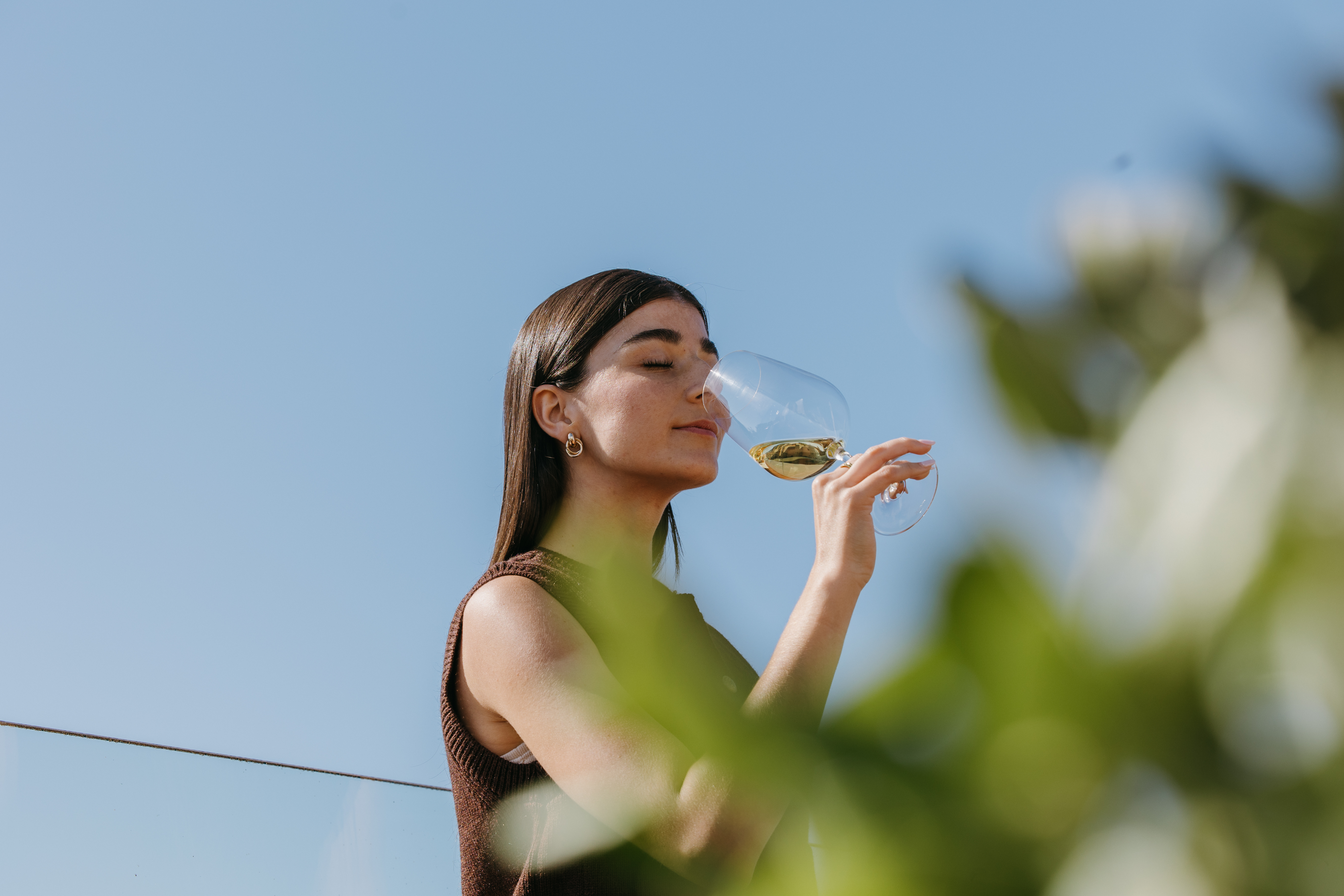
Evaluating the wine’s nose on a terrace
6. Identifying aromas
When tasting a wine, everyone perceives it differently. Our olfactory memory develops over time and through experience: what is important is to start training our nose and finding the right words to describe what we perceive. And remember, the nose is capricious: some people may perceive cocoa, and others red fruit, in the same wine, and both will be right. We might not be able to identify any specific notes and that’s fine too: we can definitely perceive the intensity of the aroma (whether it appears quickly and powerfully when we bring our nose to the glass).
A good trick for detecting aromas is to divide them into three groups: primary, secondary, and tertiary. Primary aromas derive directly from the grape: fruit, flowers, herbs, spices… Secondary aromas result from vinification decisions after fermentation, especially those reminiscent of vanilla, smoke, toasted bread or biscuits (the latter are very prominent in sparkling wine). Finally, tertiary aromas are imparted by ageing, so if we notice notes of dried fruit, honey, tobacco or chocolate, we know we’re tasting a wine that has spent time in oak.
7. Take a sip and move the wine around the mouth
Let’s take a small sip and allow the wine to move around our entire mouth, from the tip of our tongue to the sides and back. This is where we will perceive the wine’s sweetness, acidity, bitterness, body, and level of astringency (the dry sensation caused by tannins). Here’s a simple trick for detecting acidity: we will notice it on our tongue as a tingling sensation that causes the mouth to water. The longer our mouth salivates after taking a sip, the more acidity in the wine. This is a foolproof method that even works with dessert wines where detecting acidity tends to be harder, because it is often masked by high sugar levels.
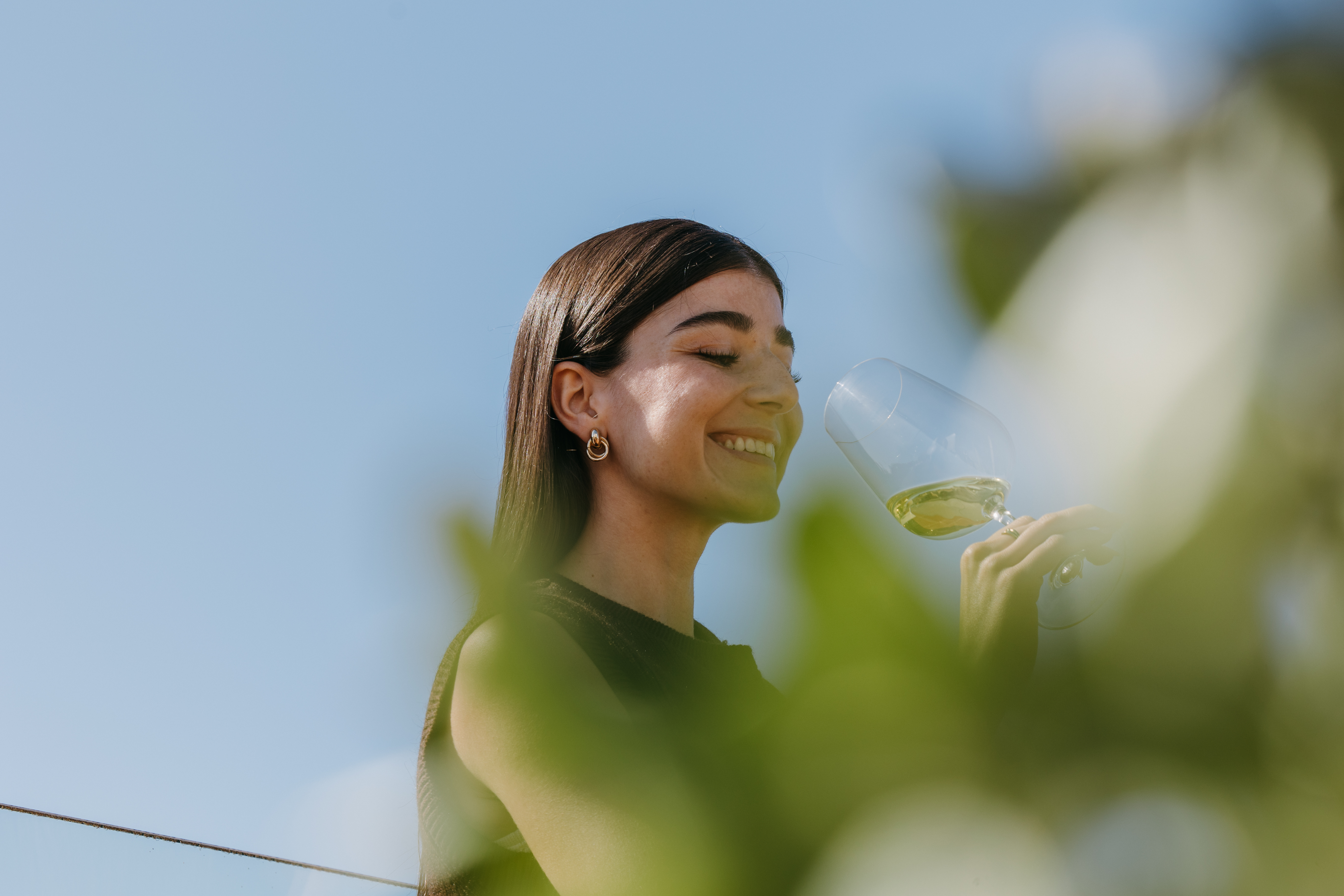
Wine tasting on a terrace
8. Perceiving balance
Balance is usually a hallmark of a good wine: it is neither excessively acidic nor excessively sweet; it isn’t dominated by excessively pronounced tannins, nor does the alcohol overwhelm the aromas. But remember: balance can vary depending on the type of wine. We should have different expectations from a young wine and an age-worthy wine or from a dessert wine and a sparkling wine.
9. Evaluating length
After swallowing the wine (or spitting it out if we’re participating in an analytical tasting), let’s observe how long the flavour lingers in the mouth. If the sensations last several seconds, we can say that the wine has good length. This is what we mean with the “finish”, the combined sensations that remain after swallowing the wine. Great wines usually have a great finish, even young and light ones.
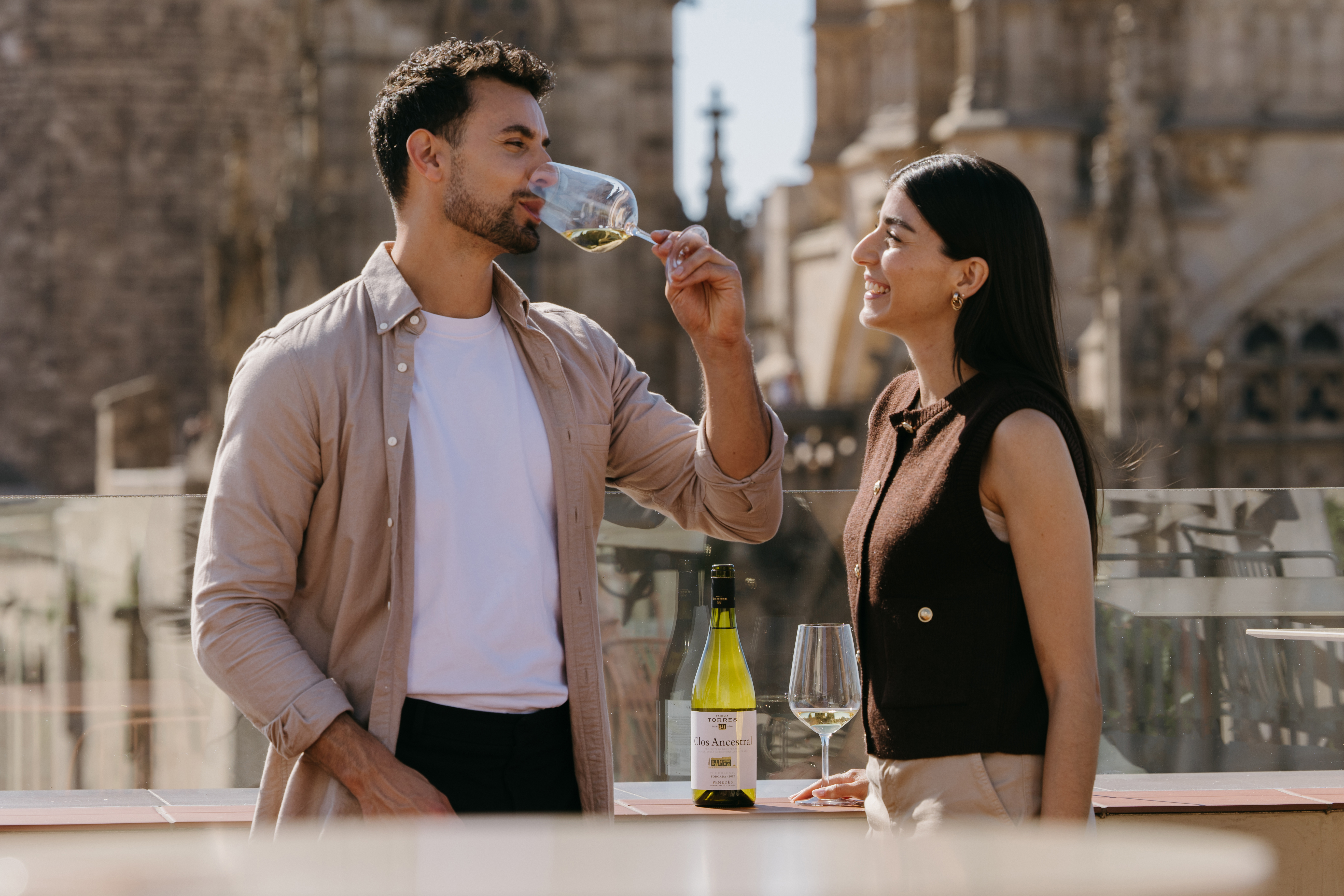
Tasting Clos Ancestral Blanco, a Familia Torres property, on a terrace
10. The crucial question: did you like it?
The moment of truth comes once the analysing is done: did you like the wine? After all, the goal of a wine tasting isn’t to pass an exam, but to learn how to find deeper enjoyment in what we drink. We shouldn’t fall into the trap of feeling like we need to appreciate top-ranked wines. They might simply not coincide with our tastes, and we might actually prefer wines with less complexity. This is the crucial question, because it allows us to draw our own personal and subjective sensory map and learn to identify what we like. At the end of the day, that’s what this is all about.
